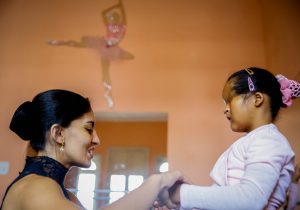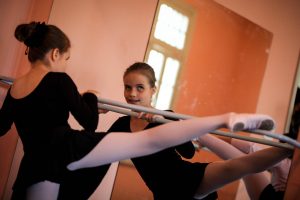
Sao Paulo, Dec 9 (EFE).– The music starts, the girls face the mirror and the teacher asks her standard question: “Where do ballerinas look?” “Up at the stars,” they reply.
The students are blind and some have never seen the sky, but they know that if they want to achieve their goals they need to lift up their heads and look with the eyes of their hearts.
That message is constantly drilled home by their teacher, who lost her sight at age nine. Geyza Pereira has danced ever since and now teaches girls with the same disability to pursue their dreams at the Fernanda Bianchini Association, an institution in the Brazilian metropolis of Sao Paulo that is the world’s only professional ballet company for the blindPereira, 31, kneels down and gently corrects the position of her young pupils’ feet.
She explains the steps in a tender voice, lowers herself to the floor and tells them to touch their legs to make sure they have the right posture.
It’s the teaching method she learned from Bianchini, a ballet instructor who for two decades has volunteered to teach people with sight deficiencies to dance and gain greater confidence and self-esteem.
“When they’re here, they forget about the problems they face outside. They gain autonomy, self-confidence and determination to never to back down from any problem in life,” Bianchini said.

She first took on this challenge while volunteering at the age of 15 with her parents at Sao Paulo’s Father Chico Institute for the Blind, where a nun asked her if she could give ballet classes to some children at the center.
“I thought I was really young and even incapable of teaching ballet to people with special needs. But my parents then told me the wisest words I’ve heard in my life: ‘Never say no to a challenge, because that’s where our greatest life lessons come from,'” she said.
The students at the Fernanda Bianchini Association have different levels of vision; some have limited sight, while one girl was born without eyes, but they know from day one that their disability does not impede them from dancing.
Pereira, who lost her sight at age nine, is a role model for her young students.
A native of a poor, arid region in the interior of the northeastern Brazilian state of Pernambuco, she went on to become the star of a recent documentary about her life and Bianchini’s academy titled “Olhando pras Estrelas” (Looking at the Stars).
“I wondered how a blind person could make such beautiful movements like those of ballet. Fernanda told me to believe in my dreams, and I’m still doing that today,” Pereira said.
